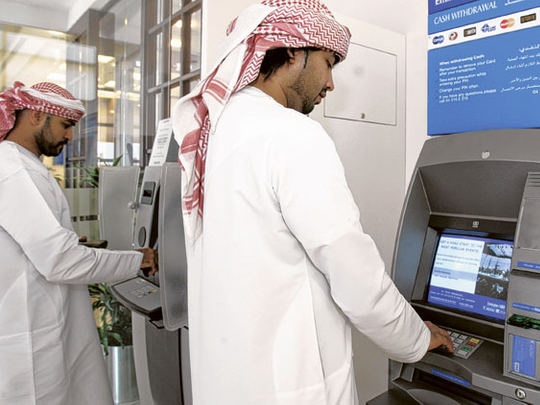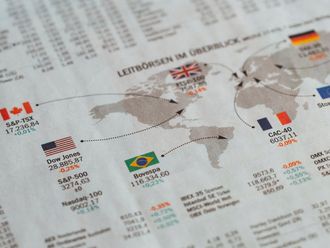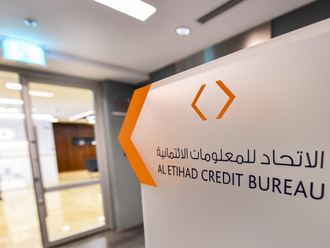
Dubai: Regulatory tightening of the retail banking business combined with slow loan growth to the private sector is expected to result in muted earnings growth in the UAE banking sector in the second quarter of this year, according to banking sector analysts.
An increase in non-performing loans (NPLs) resulting from the restructuring of some of the leading government related entities (GREs) is also expected to weigh down margins. Analysts expect banks to start making provisions for these NPLs starting this quarter.
According to rating agency Moody's, non-performing loans of UAE banks are expected to peak above 10 per cent this year, up from 8.3 per cent in 2010 and 4.9 per cent in 2009.
Moody's expects the upcoming $10 billion debt restructuring of Dubai Holding to be a significant contributor to this year's NPL levels of UAE banks, especially those based in Dubai.
Restrictions
"Dubai-based banks typically have high exposures to Dubai government-related entities, and we consequently expect NPLs to peak in 2011 at around 6-8 per cent in Abu Dhabi and 11-14 per cent in Dubai," said Khalid Howladar, Vice-President - Senior Credit Officer at Moody's.
Bankers and analysts expect the asset quality of leading UAE banks to remain under pressure compared to their regional peers this year.
"UAE banks have yet to experience the peak in their non-performing loans to 8.4 per cent, on our estimates for 2011 and will have to adjust to stricter regulatory measures mainly on consumer lending and fees," said Mohammad Hawa, an analyst with Credit Suisse.
The new lending rules implemented by the UAE Central Bank from May 1, that capped the lending limits of banks and restricted the maximum fees chargeable on banking services are expected to impact both the net interest margins and fee incomes of banks operating in the country.
"The UAE Central Bank issued a detailed circular related to retail banking recently, placing certain restrictions on lending volume and the fee generated from this segment.
"These regulations are expected to hit all banks in general and banks with greater retail exposure," said Naveed Ahmad, senior financial analyst with Global Investment House.
Credit Suisse expects the recent tightening of retail lending rules and free structures by the Central Bank to affect non-interest income growth of UAE banks
"We expect the non-interest income of UAE banks to decline 3.8 per cent year-on-year in 2011 compared with growth of 4 per cent in 2010," said Hawa.
While most banks have yet to announce their second-quarter results, First Gulf Bank, which announced them last week, reported a net profit of Dh890 million, an increase of 13 per cent over the same period last year.
FGB's income from fees for the same period plunged 18 per cent to Dh291 million as the impact of the Central Bank's regulations took effect, capping loan fees and the amount banks could lend to individuals.
Potential threat
The bank said the reduced income from fees and commissions was "mainly due to regulatory changes in retail lending implemented recently by the UAE Central Bank."
The concentration risks of banks to a few GREs that face restructuring and heavy exposure to the real estate sector are also seen as potential threat to the asset quality of UAE banks.
The NPL ratio for six leading UAE banks covered by Credit Suisse stood at 7.2 per cent and the provision coverage stood at 51 per cent in 2010.
"Given the exposure to Dubai's GREs and a weak real estate market, we expect the NPL ratio of banks to continue to rise and reach 8.4 per cent in 2011, while we forecast the provision coverage to increase to 58 per cent," said Credit Suisse's Hawa.
Despite the improved liquidity and reduced cost of funds, lending by UAE banks is expected to grow only in the range of 4-6 per cent in the second quarter.
Despite a projected surge in overall NPLs for the year, Moody's said the UAE benefits from the twin growth engines of Abu Dhabi and Dubai.
Both are showing signs of recovery in key sectors such as tourism, transport, logistics and both benefit from sizeable state intervention in the economy.












